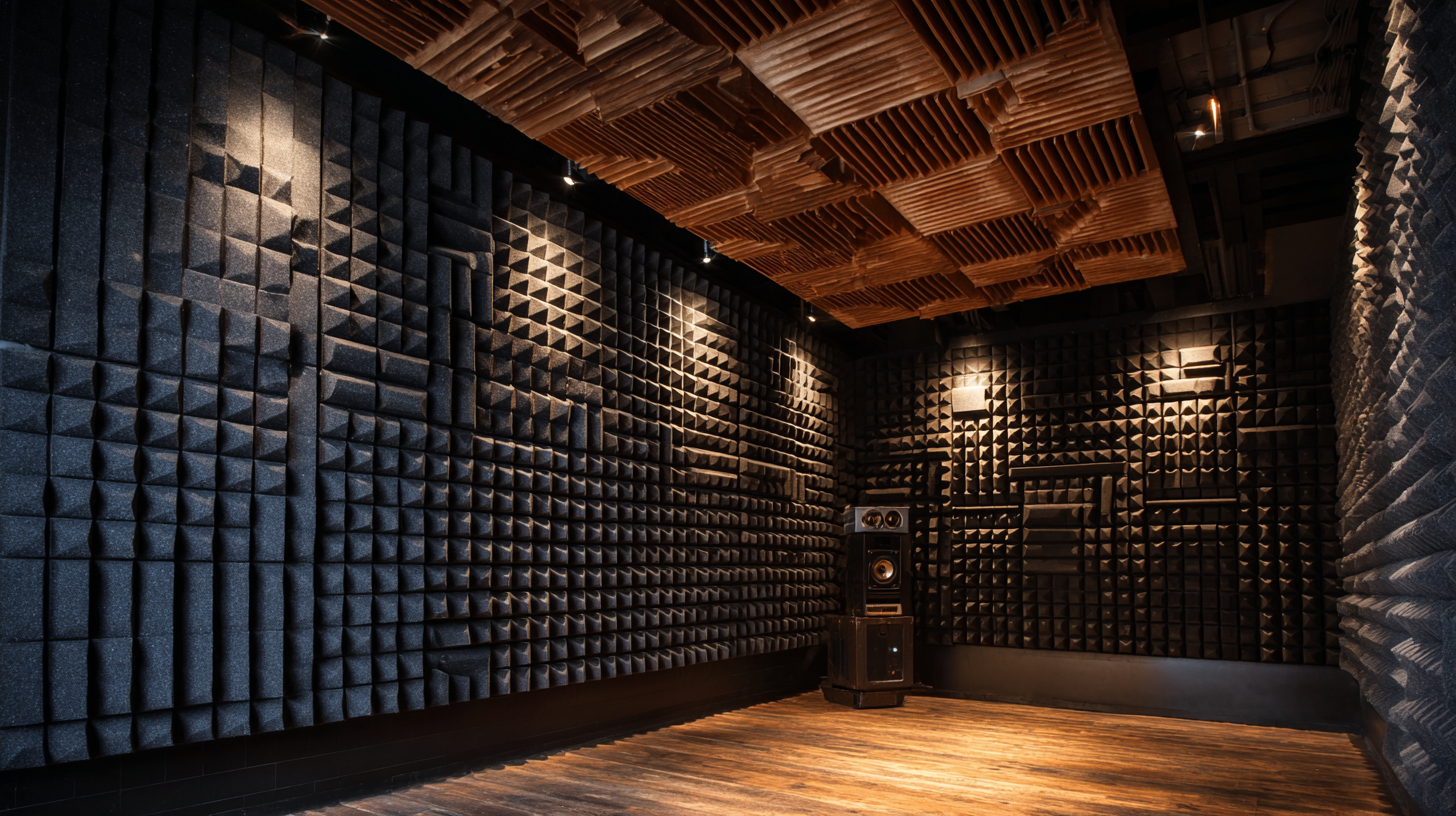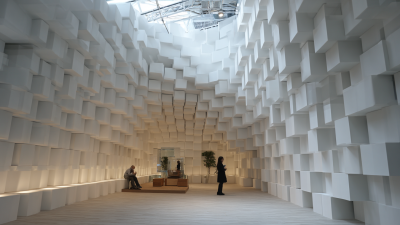In today's fast-paced world, creating a serene and productive environment in both home and office settings has become increasingly important. According to a report by the Global Acoustic Panels Market, the demand for sound panels is projected to grow significantly, driven by the need for noise reduction in various spaces. These sound panels not only enhance acoustic quality but also serve as an integral part of interior design, allowing for creative expression while mitigating distractions.

Acoustic art is revolutionizing how we think about sound panels in our spaces, merging functionality with aesthetics. These unique sound panel designs not only minimize noise but also transform bland walls into vibrant art pieces. One option is the use of fabric-wrapped panels featuring abstract prints or custom designs. By selecting colors that complement your home or office décor, these panels become a focal point, enhancing the overall atmosphere while effectively absorbing sound.
Another innovative design involves 3D sound panel shapes, such as waves or geometric patterns. These multi-dimensional panels not only serve to control acoustics but also create a striking visual impact. Installing them in a staggered formation adds an element of depth to any room, making it more engaging. Additionally, incorporating natural materials like wood in sound panels can evoke a sense of warmth and connection to nature, appealing to those who value organic elements in their environments. With these creative acoustic arts, you can effortlessly blend comfort and style in both home and office settings.
In today’s open office environments, noise reduction is crucial for maintaining productivity and employee well-being. Research by the World Health Organization indicates that excessive noise can lead to reduced concentration and increased stress levels in the workplace. Incorporating sound panels not only enhances acoustics but also transforms the overall aesthetic of your office space.
One professional and stylish idea is to use customizable fabric-wrapped panels that come in a variety of colors and textures. This allows businesses to align the sound panels with their brand identity, creating a cohesive and visually appealing environment. Additionally, geometric wall panels can add a modern touch while effectively absorbing sound, making them a favorite among contemporary office designs.
Another popular choice is freestanding acoustic panels, which provide flexibility and can be easily repositioned as needed. According to a study by the Acoustical Society of America, such movable panels can improve speech intelligibility by up to 20%, fostering more effective communication among team members. By integrating these stylish sound panel ideas, offices not only support improved sound quality but also create an inviting atmosphere that inspires creativity and collaboration.
When it comes to creating a comfortable living space, sound management is often overlooked. However, a study by the Acoustical Society of America reveals that noise pollution can lead to increased stress levels and reduced productivity. Implementing sound panels in your home can significantly improve acoustics while also enhancing the aesthetic appeal of your interiors. Here are four cozy sound panel solutions tailored for your living spaces.

Firstly, consider utilizing fabric-wrapped panels in warm, inviting colors that complement your home's décor. These panels can be installed as wall art or hung from the ceiling, providing both sound absorption and visual interest. According to a report by the National Institute of Health, incorporating softer materials like fabric helps reduce echo, making your space feel more serene.
Another cozy solution is to blend acoustic panels with shelving. This not only reduces noise but also offers practical storage solutions. A study from the Journal of Architectural Acoustics indicates that strategically placing sound panels on bookshelves can enhance sound quality while maintaining a homely environment. For a unique twist, try DIY wall installations using reclaimed wood and sound-absorbing materials, which add character while combating noise pollution.
In small rooms, maximizing both functionality and aesthetics is essential, and sound panels offer a unique solution to achieve this balance. Innovative installations, such as custom-shaped panels that align with room themes, can significantly enhance the visual appeal while effectively absorbing sound. Consider using geometric designs that mimic the room's architecture to create a cohesive look. Additionally, opting for bold colors or patterns can transform a compact space into a vibrant and inviting area.
When planning your sound panel placement, think vertically. Tall, narrow panels can add height to a room, making it feel more spacious while minimizing echo. For an artistic touch, arrange panels in a gallery-style layout, mixing different shapes and sizes. This can not only improve acoustics but also serve as a striking focal point that draws the eye.
**Tips:** Use removable adhesive strips for easy installation and adjustments without damaging walls. Experiment with panel placement before finalizing to discover the most visually appealing and acoustically effective arrangement. Lastly, consider incorporating natural elements, such as wooden panels or panels with plant motifs, to bring warmth and character to the space.
DIY sound panels are not only functional for sound management but also serve as an engaging element in interior design. By incorporating creativity into sound panel projects, you can transform both home and office spaces. According to recent trends in sustainable building materials, using eco-friendly fabrics and acoustic insulation can enhance performance while minimizing environmental impact. Reports indicate that such innovations are gaining popularity in interior design, providing a dual benefit of aesthetic appeal and effective soundproofing.
Consider creating your own sound panels using reclaimed wood or recycled fabrics, which aligns with the growing focus on sustainable materials. Studies show that integrating such elements can elevate the overall ambiance of a room while contributing to echo reduction—crucial in spaces like home offices or studios. Furthermore, these DIY projects not only enhance your interior design but also give you an opportunity to showcase your personality and creativity. As more individuals look to personalize their environments, the marriage of functionality and style in sound panel design is becoming essential.







